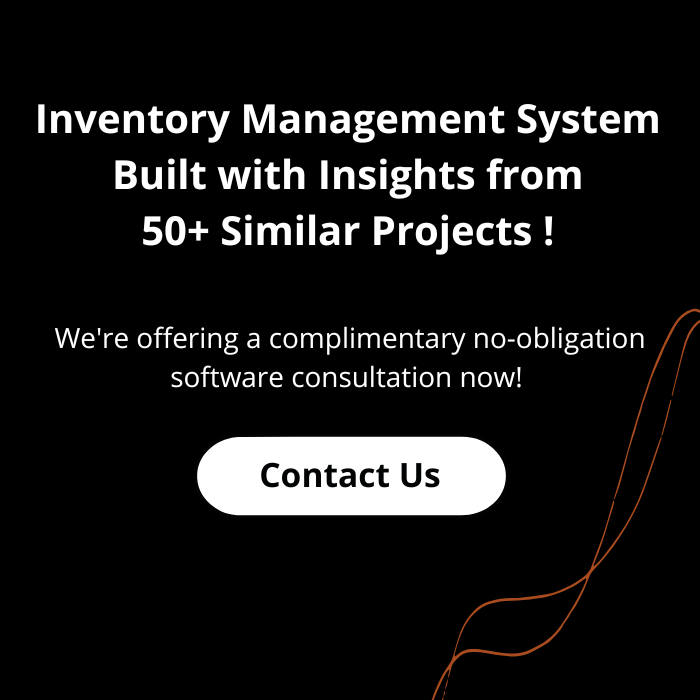Inventory management is a necessary evil! Every manufacturing and warehousing industry knows what I’m talking about. Still managing your inventory on a spreadsheet or worse, not managing it at all? The aim of this article is to give you a 360 degree understanding of what inventory management software does and why it is absolutely necessary for any supply chain business to electronically manage their inventory. It also gives you a broad idea of some of the main features that an inventory management software must have.
Anyone running a supply chain business knows that inventory is among the more significant sources of revenue for a company. An accurate inventory accounting can have a dramatic effect on your revenue and profit and missing that might be damaging for the business.
“Out of stock” situations are always a disappointment and it adversely affects your revenue and reputation in ways you can't imagine. Whether you are a small business or a settled one, maintaining a single webshop or multiple consignment shops and retailers, inventory management helps you track and control the supplies and stocks and helps optimize and manage your inventory and sales.
In this article, we will step by step discuss what inventory management is, why automate inventory management, benefits of using an Inventory Management Software and what features that software must have.
Get a Free Inventory Management Consultation !
What Is Inventory Management?
Inventory management is part of supply chain management. Inventory management involves keeping track of a company’s stocked goods. Efficient inventory and warehouse management are crucial for retail, wholesale, logistics, and other industries to ensure a business has enough stock on hand to meet customer demand.
In a broader sense, it means tracking all the different operation of a business and collaborating them to take better decisions.
What Inventory Management Software Is?
If inventories are not handled accurately, one of the two critical things will happen – Either a business will lose money on potential sales or waste money stocking up items that are not required.
What an inventory management software does is it handles the whole inventory process from quotation to fulfillment. Along the way, it also keeps a track of the customer, supplier, purchase orders, shipments, and other records, so that you can keep a track of what products are selling and in what quantity. Take a look at this dropshipping automation software with a very advanced inventory management functionality to manage all of the orders, inventory, shipping with the help of an easy to use Dashboard.
Automating inventory management provides businesses with a competitive advantage as they can forecast future trends and plan ahead. Inventory management software helps in predicting future demand and supply to help adjust shipments and deliveries and reduce costs and headaches related to over and understocking.
Inventory management software solutions also provide detailed reports and analytics on the overall inventory performance and valuation. Let’s see some benefits of developing an inventory management software for your business :
Get an Estimate for your inventory management software
Benefits Of Using An Inventory Management Software
[1] Inventory management software keeps track of all your inventories and provides a consolidated view of the stock-in-hand.
[2] Controls cost and improve delivery by setting proper customer expectations
[3] Automatic and easy re-ordering
[4] An inventory management system can integrate with a number of other software systems, including accounting and enterprise resource planning (ERP) systems.
[5] Establish inventory visibility at each of the locations across any time and date through system generated reports
[6] Forecasting future demand by analyzing trends in data and stocking inventory w.r.t the demand
So, the best inventory management software must not only keep a count of stocks in hand but should also be intelligent enough to provide actionable business insights, for ex: identifying low and high performing products and sending re-order notifications when stocks are low.
Saying that; what are the features and functionalities you should look to incorporate in the inventory management software to optimally utilize everything that it has to offer?
Interested in dropshipping? Here's how a dropshipping website can water your growth!
Inventory Management Software? Analysis Of Features That Every Inventory Management Software Must Have :
[1] Inventory Tracking And Management
It is very important that employees in charge of inventory management understand what items are there in the stock and where are they stored in the warehouses, in real time, to help reduce costs and prevent fraud. Key to proper inventory control is the most important attribute of inventory management software solutions.
Your inventory management software must give you real-time detailed visibility into key supply chain management components. This will help you avoid stockouts, place automatic reorders and gets automatic stock updates as and when sales are made.
Some components include:
-
Inventory list
-
Product details and history
-
Capturing and tracking stock requisitions
-
Materials tracking
-
Matching shipments to orders
-
Automatic reordering
-
Triggering minimum stock alerts
-
Eliminating obsolete inventory
-
Stock adjustments
There are a few ways businesses keep a count of their inventory – Manual, Barcodes, RFID and Computerized point-of-sale. We discuss the popular and widespread one in this article – barcoding software.
[2] Barcoding Software Integration
Manually counting and updating inventory is daunting and prone to human error. Your business can run into irreversible trouble if the inventory tracking process is carried manually.
The most common inventory counting process is the barcode process. With integrating barcode software in the inventory management solution and purchasing readily available barcode scanners, businesses can leverage this technology to improve accuracy, speed and significantly reducing costs.
A barcode scanner is simply a device that reads printed barcodes and translates them to alphanumeric numbers. Then with the help of a barcoding software, the scanner passes on the information to a computer database where it’s saved. Each of these numbers refers to a unique item in the inventory and scanning the bars gives access to all sorts of information w.r.t SKUs like price, stock in hand, description, etc and paints a picture for some reference.
Inventory management can hugely benefit from integrating barcode scanning software. This automates the whole inventory tracking process, stock-taking, and stock organizing, thus making it much more efficient. Businesses can automatically serialize inventory or asset tags and simplify tracking.
Barcode scanning integration with inventory management solution can also effectively save costs. Barcode scanning ensures that correct information is available at your fingertips and helping to monitor out-of-stock SKUs and optimize revenue better.
USE CASES:
[a] Scan barcodes on packages in warehouses as they enter and exit to maintain a record of the stock in hand.
[b] Transportation companies can scan barcodes while accepting or delivering cargo

[3] Purchasing, Shipping And Order Fulfillment
A company's purchasing decisions directly impact how accurately inventory levels are managed or controlled. Inventory management software ensures when a purchase order is created, inventory is automatically updated. The software needs to make creating POs a cake walk with all the necessary supplier information at one's fingertips.
Automatically generate POs when items are low in stock, receive partial orders and track backorders. Track the POs from start to finish. Mark purchase order as partially received.
Automate shipping price calculation based on shipping zones or cargo weights. Also, integrate shipping with your eCommerce Store so that shipping rates can be displayed. Automate the complete workflow from order creation to fulfillment i.e.quotation sending, order tracking, order return for all your sales channels.
-
Purchase Order
-
Supplier Management
-
Auto-price calculation Order Tracking
-
Automated purchase orders email to suppliers
-
Shipping documents
-
Packing Slips
-
Labeling
[4] Customer Relationship Management
A CRM helps save customer data securely so that you have their purchase history and preference details to predict future behavior.
-
Keep a history of orders
-
Personalized marketing and incentives
-
Default address setting and Customize Tax Rates
-
Build a price book for each pricing strategy
[5] Inventory Reports
Inventory management metrics give an in-depth look and analysis into how your inventory is performing over time. Some of the important reports are :
-
Overall Inventory Performance Report -> To get a rough idea of how the business is performing, it is important to keep a tab on how much profit your products are making to ensure it is performing at a maximal level.
-
Inventory Control -> Knowing how much inventory you have lying in your warehouse is vital for any business at any point in time.
-
Inventory Forecasting -> Demand forecast accuracy reflects the variation in real or actual demand and what is forecasted at the business level.
-
Supplier Quality Index -> This is to measure if your suppliers are performing optimally or not and if there exists room for improvement. Look into the percentage of returns and also the “on-time products received” report.
Now you have clear idea about the inventory management software benefits and it's feature! Before choosing any randome software, you can read this article to get a guidance on how to choose the best warehouse management software.
Plan Your Inventory Management System !
Why Does Developing Your Inventory Management Software With BinaryFolks Make For A Wise Choice?
Driven by ex-engineers from Google, Amazon & Salesforce
101% Value For Money (+1 for Our Complimentary Consultation before You Spend Your 1st Dollar!)
Reviews That You Can Verify!
Safeguarded Business With An NDA
Out-Of-The-Box Innovations
Eye For Details
Questions Galore (Until Your Requirement & Our Understanding are mirror copies!)
Insight-Rich Scope Enhancement
Intense Domain Expertise
Close-knit feedback loop
Parting Words
An inventory management system for small businesses let business owners efficiently track and manage inventory, orders, and customers. When you track the stocks and inventories, you can find them for your customers, reorder before the stocks run out and also predict the sales that you will make in the future. This means more time and concentration on growing the business and earning more revenue.





